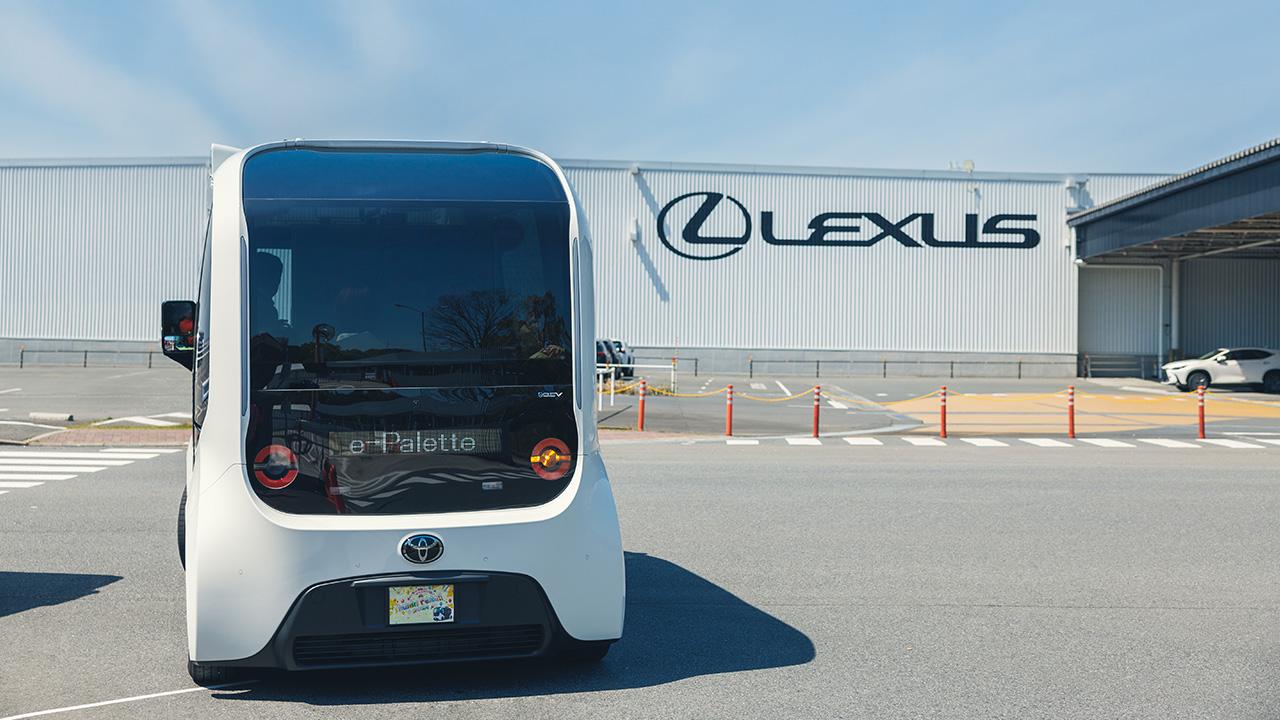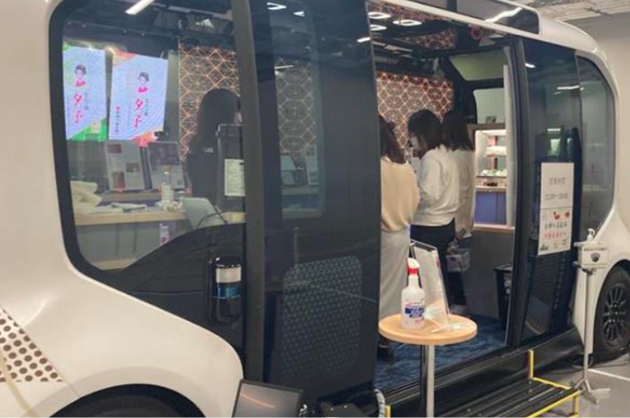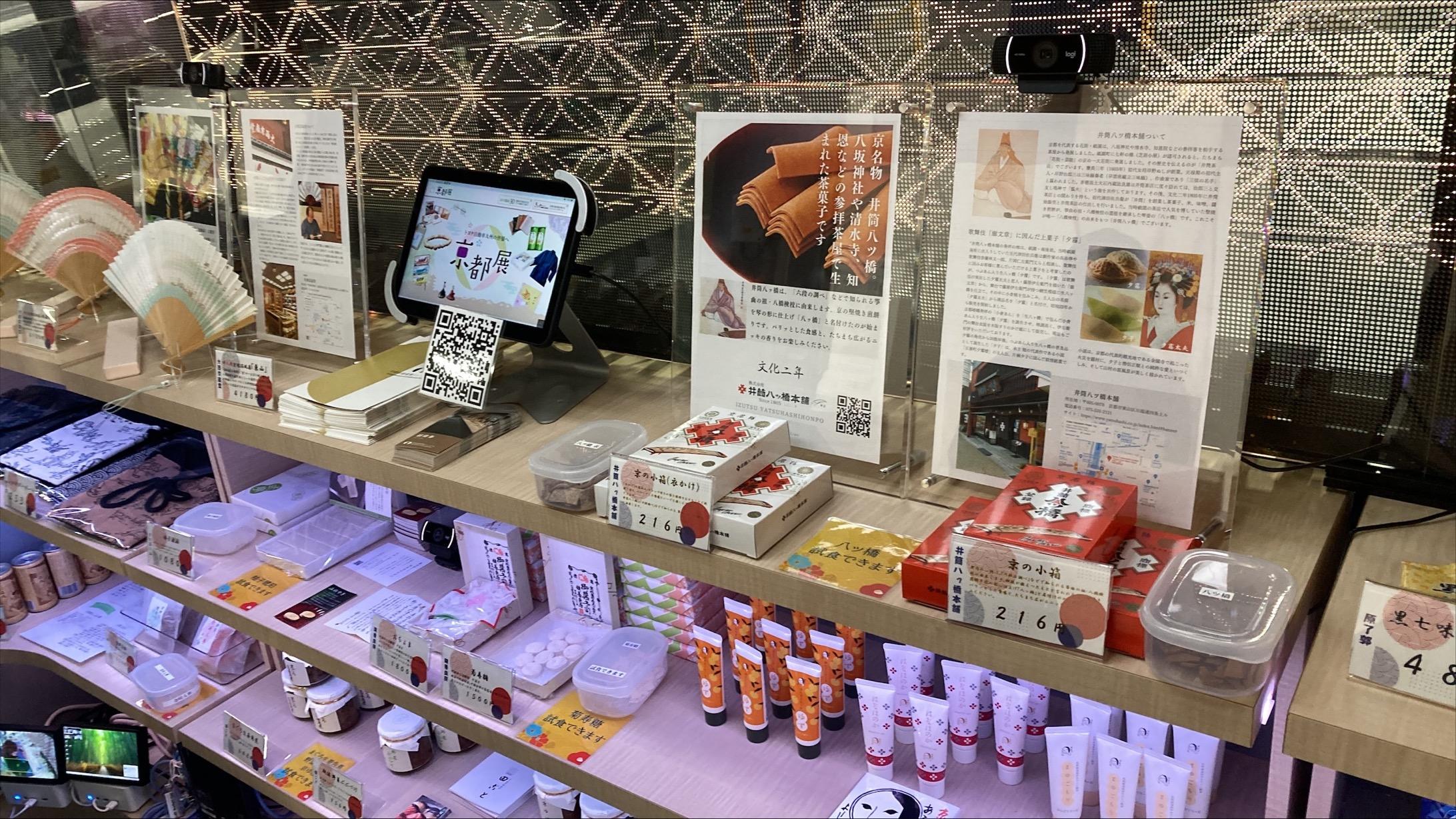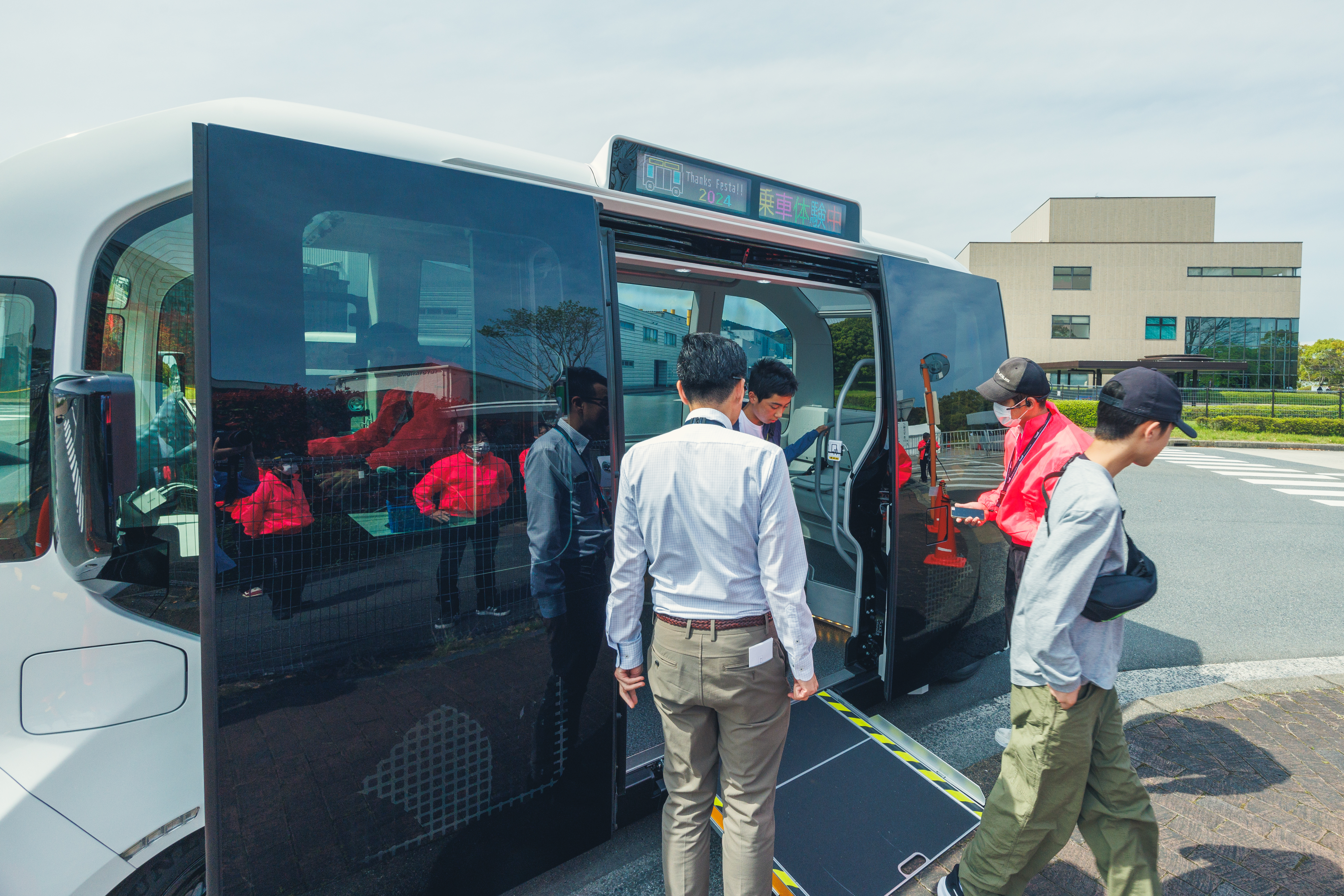
The e-Palette is a symbol of Toyota's transformation into a mobility company. Ahead of a public rollout, what is happening at Toyota Motor Kyushu's Miyata Plant?
A slice of Kyoto comes to Miyata
“For the next step in mobile vending, we’re also trialing unstaffed sales,” says Satoshi Miyamoto, Project General Manager at the MaaS Project Department.
Miyamoto
With an eye on autonomous driving, we tested whether the service would work without sales staff.
The unstaffed system uses an app for authentication and payment, eliminating the need to pay at the register, which would otherwise take about 70 seconds.
By our estimate, this enables more than twice as many hourly customers and sales.
In user surveys, as many as 88% of people say the experience “felt smoother” without a register, showing the possibilities for unstaffed sales.
To develop mobile vending further, the MaaS Project Department is working on “mobile experience stores” with the goal of shifting to higher-value products.
With items such as lunches and drinks, spending per customer is inevitably low, making it hard to create a viable business. To get around this, the team conducted trials exploring the potential of e-Palettes as showrooms for high-value goods.
Miyamoto
Think of it as a movable pop-up store. Visitors can experience the appeal of the products with all the senses, picking things up and tasting them, while being served remotely by sales staff. Products that catch their eye can then be bought online.
As a business, visitor-tracking cameras allow you to obtain marketing data on the number of customers, their attributes, how long they look at products, and their reactions.


Starting in January, the Miyata Plant hosted a three-month Kyoto fair in collaboration with long-established stores from the region, showcasing various products.
The chance to buy products from 11 renowned Kyoto retailers without leaving the workplace proved more popular than anticipated.
Miyamoto
During that period, products could be bought on the spot, rather than online. We received positive feedback, with users telling us they were delighted to be able to buy specialty Kyoto products at work, and that it felt like a slice of Kyoto. Others requested similar fairs for Hokkaido or Okinawa.
Likewise, the Kyoto businesses said the initiative was highly worthwhile, as it allowed them to easily boost recognition of their stores and products beyond their region and encouraged customers to seek them out when visiting Kyoto.
Generally, holding a product fair is a costly endeavor, as it requires securing a venue and dispatching staff.
Miyamoto’s team wanted to test the potential for using the e-Palette’s showroom function to overcome such hurdles.
As a second step, the concept was also trialed anew at the Miyata Plant’s Thanks Festa 2024 held on April 14, an event for employees and the local community.
For the original Kyoto fair, customers were served by MaaS Project Department employees. At Thanks Festa 2024, however, staff at participating stores joined in remotely from Kyoto to provide assistance.
The e-Palette’s onboard screens allowed visitors to receive product explanations and sampling recommendations from shop staff in Kyoto as they browsed and purchased the region’s specialties.
In a further effort to bring a taste of Kyoto to Kyushu, the e-Palette’s external screens were used to hold workshops. Instructors from Kyoto stores showed visitors how to brew a delicious cup of Japanese green tea.
Just like at in-store classes, participants poured and tasted tea for themselves while watching the instructor’s demonstrations and explanations on a large external screen at the rear of the e-Palette.
Miyamoto
Those who were served remotely or took part in the tea class told us they were delighted by this unexpected opportunity to enjoy Kyoto culture and felt like they had visited the city.
In questionnaires, 86% said they would like to visit the participating stores when traveling to Kyoto.
I believe we achieved great results regarding the e-Palette’s potential to serve as a showroom.
We will continue to explore its feasibility as a business, including ways to smoothly integrate online sales.

The concept behind the e-Palette is to “create a mobility service that transforms our cities and supports people’s lives.” CV Company Project General Manager Takahiro Muta, who heads development, hopes that the wide-ranging insights gained through these trials will help bring this concept to life.
Muta
The e-Palette is both a product in the form of a vehicle and a service in the form of mobility. In that sense, getting the e-Palette out on the market is merely one milestone along the journey.
Even after the launch, we will continue cultivating the e-Palette together with the customers who use it, contributing to a new era of mobility.
Muta says the vehicle is entering its final stages of development. After it goes out into the world, how will the e-Palette grow and contribute to our mobility society? We’ll have to wait and see.

